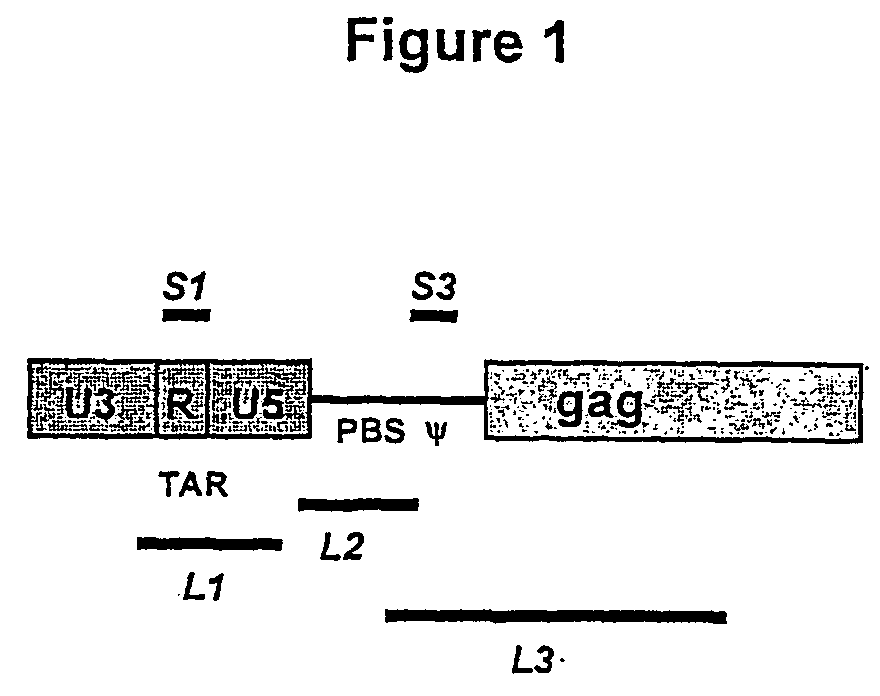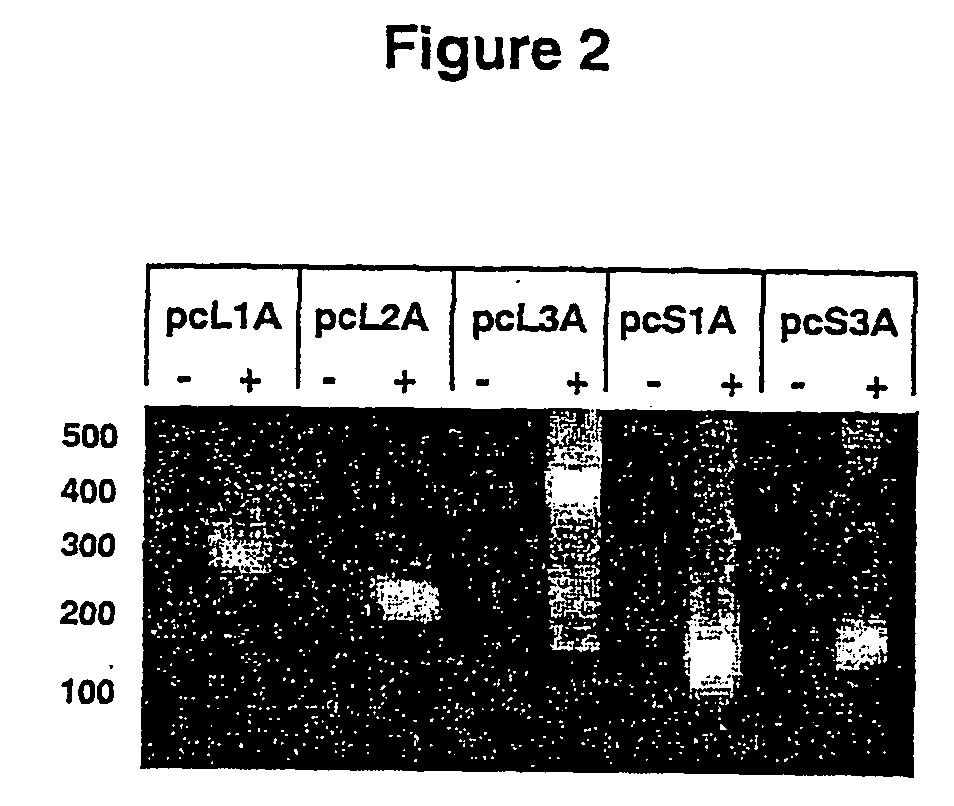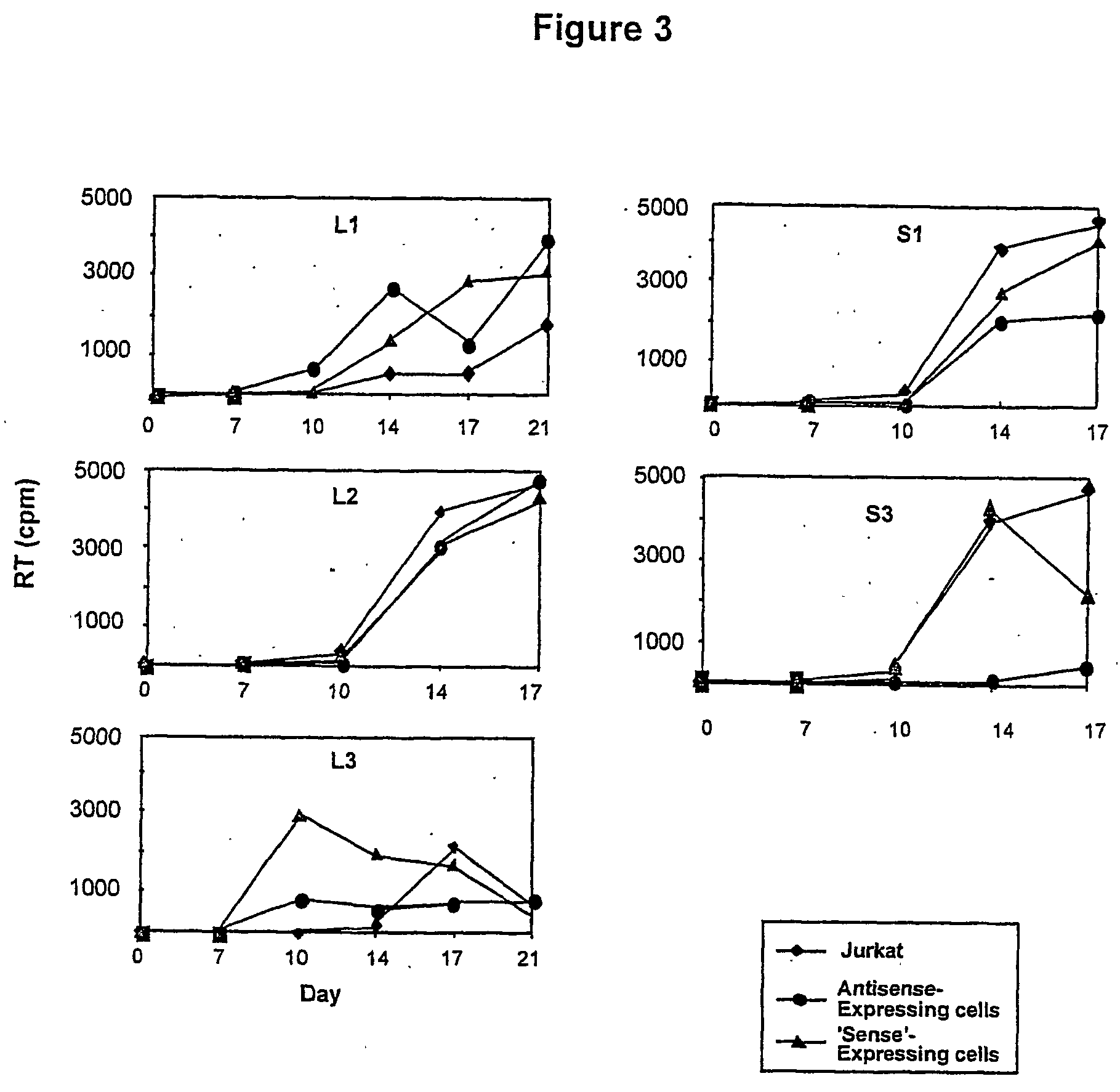Antiviral antisense therapy
a technology of antiviral and antisense, applied in the field of antiviral antisense therapy, can solve the problems of typical attenuation of virus vectors and defective replication
- Summary
- Abstract
- Description
- Claims
- Application Information
AI Technical Summary
Problems solved by technology
Method used
Image
Examples
example 2
[0102] Materials and Methods
[0103] Construction of Antisense-Expressing Vectors
[0104] Sequences from the HIV-1 molecular clone HXB2, designated S1-L3 (FIG. 1) were amplified by PCR using primers containing a HindIII site. The size and positions of these sequences along with the PCR primers used to amplify them are shown in Table 1. PCR products were digested with HindIII then ligated into the HindIII site of pcDNA3.1 (Invitrogen, The Netherlands). Recombinants containing these sequences both in the sense and antisense orientations were identified by restriction digestion and sequencing; these constructs were named pcS1A (antisense orientation) and pcS1S (sense orientation) etc. Antisense-expressing vector constructs based on pBabePuro.sup.1 were constructed as follows (and are illustrated in FIG. 4).
[0105] For single-copy vectors, antisense cassettes containing L1, L3 and 53 from the pcDNA3.1-based constructs were excised from these plasmids by digestion with NruI and BamHI and clon...
PUM
| Property | Measurement | Unit |
|---|---|---|
| melting temperature | aaaaa | aaaaa |
| melting temperature | aaaaa | aaaaa |
| melting temperature | aaaaa | aaaaa |
Abstract
Description
Claims
Application Information
 Login to view more
Login to view more - R&D Engineer
- R&D Manager
- IP Professional
- Industry Leading Data Capabilities
- Powerful AI technology
- Patent DNA Extraction
Browse by: Latest US Patents, China's latest patents, Technical Efficacy Thesaurus, Application Domain, Technology Topic.
© 2024 PatSnap. All rights reserved.Legal|Privacy policy|Modern Slavery Act Transparency Statement|Sitemap



